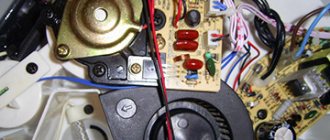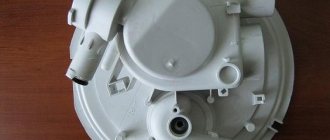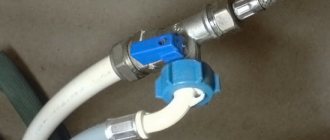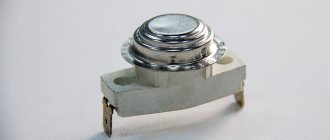Share on social media networks:
Many aquarium fish come from the tropics, so the optimal water temperature for their life is 26-27 degrees. Therefore, heating the water is mandatory; installing a heater in the aquarium is an important point when arranging “housing” for its inhabitants. If in the summer it is possible to maintain a suitable microclimate in an artificial reservoir without much difficulty, then in the winter, without a special device for heating the water, the fish may die. Let's figure out how to do this kind of work with your own hands.
Why is a heater needed?
Do you need a water heater in an aquarium and how to use it?
- In winter, the water in the aquarium can be excessively cold.
- The water temperature is different day and night, and fish do not tolerate such changes well.
- For many fish, the optimal environmental temperature is higher than room temperature, and the water will not warm up to the required temperature on its own.
Important! Modern models of water heaters maintain the best microclimate. They are equipped with temperature sensors to prevent the water from overheating.
Aquarium thermostats
These are devices with a built-in thermostat. You set the required water temperature, and the device heats it up to the required numbers. After this, it automatically turns off, turning on after the medium begins to cool.
There are 2 types of such water heating devices.
- Mechanical.
- Electronic.
Important! Mechanical devices are less accurate (the error is from 1 to 2 degrees), but have a lower cost. Electronic devices are much more accurate, but their cost is much higher.
Most devices come without a built-in thermometer. The device maintains the optimal temperature, but does not display its value. Therefore, you need to purchase a special thermometer for water along with the thermostat.
When choosing an aquarium water heater, you need to pay attention to the following characteristics:
- Correct selection of power.
- The presence of thermoregulation.
Important! It is believed that a 10 W device is enough to heat 4.5 liters of water. For an artificial reservoir of larger volume, it is better to buy not one powerful device, but several low-power ones: this way it is easier to heat the water to optimal levels.
Advantages
Modern models of water heating devices have the following advantages:
- Reliability.
- Possibility of placement under water.
- Safety.
Important! During prolonged use, the device may produce errors, so it must be checked periodically using a regular thermometer.
Now about which water heater for an aquarium is better. If you are using shallow soil, it is advisable to use a thermal cable heater. In this case, you not only maintain the necessary environmental characteristics, but also create better conditions for aquatic plants. In addition, heated water freely rises to the surface without stagnating in the ground.
Aquarium heater. With and without thermostat. Functions, selection rules
Many novice aquarists neglect to buy an aquarium heater due to its considerable cost (about 1000 Russian rubles for such well-known brands as Aquael). Meanwhile, an aquarium heater performs not only the function of heating water, but also a number of additional ones. Which ones? Read more about the types of aquarium heaters, features of choice, and the role of heaters for the life of aquarium inhabitants.
Functions of an aquarium heater
1. Heating the water in the aquarium. It should be remembered that the heater is not like the heating element of an electric kettle and can only heat the water in the aquarium three to five degrees higher than the ambient temperature. This function is indispensable in a cold room in winter (for example, when the heating is turned off).
By the way, the rate of cooling or heating of water in an aquarium is directly proportional to the area of the side walls of the aquarium, and the normal temperature for most tropical freshwater fish is 26-27 degrees Celsius.
2. Stabilization of water temperature in the aquarium. The fact is that fluctuations in water temperature in an aquarium by more than two degrees cause stress in aquarium fish and other inhabitants, and stress, as is known, leads to a decrease in immunity and, as a result, to the death of aquarium fish.
This function is especially useful when ventilating a room with fish, when cold air from the window provokes a temperature difference. Also, in small aquariums, temperature fluctuations during the day are large, so you should take care of purchasing a heater.
Temperature fluctuations during the day in small aquariums are most often provoked by the difference in temperature when the lighting is on and off (ordinary fluorescent lamps have a much stronger effect on the temperature of water in small volumes than in aquariums of 50 liters or more).
3. When heating water, the heater creates movement of layers of water, promoting, albeit short-term and insignificant, mixing of the water in the aquarium.
Types of Aquarium Heaters
1. Immersion heater. This is the most common and commercially available type of aquarium heater. Such heaters are most often made of glass or plastic. The heating element is located directly in a heat-resistant housing, which is completely immersed in water.
In glass heaters of this type, the flask is filled with the smallest ceramic filler, which ensures high thermal conductivity.
Such heaters are almost always equipped with a thermostat, allowing you to do without constant monitoring of the water temperature in the aquarium. As soon as the water temperature drops half a degree below the set value, the heater begins to heat the water until the temperature rises to the initial value preset on the heater relay.
2. Flow heater. Such heaters usually have a plastic body and are installed in the aquarium in a horizontal position at the water outlet from the filter pump.
3. Heating cables. You rarely see such cables on sale, which is a pity. Such cables are usually installed under the ground, which is the coldest place in the aquarium. When the water is heated, water rises from the lower layers of the aquarium, creating excellent water circulation throughout the aquarium.
4. Heating mats. Rarely found on sale. The operating principle is as follows: the mat is placed under the aquarium, when the mat is heated, the bottom of the aquarium is heated, and the water in the aquarium is heated from the bottom. just like the heating cable, it contributes (albeit to a lesser extent) to mixing the water in the aquarium by raising heated water from the bottom to the top layer.
5. Heater included in the filter. Many models of internal or mounted filters have a built-in heater. This allows you to save money on purchasing this device for your aquarium.
How to choose the heater power for an aquarium
When selecting the heater power, you should first of all follow the instructions from the manufacturer. The displacement of the aquarium is always indicated on the packaging.
As a general rule, for 1 W of heater power there should be 1 liter of water. In practice, you can buy a heater with calculations of 0.5 W per liter. Some sources recommend 1.5 watts per liter of aquarium water. Since power does not affect the cost of the heater in any way, it is better to buy a heater of higher power. But do not forget that the power of an aquarium heater directly affects energy consumption.
From personal experience I can add that in my 60 liter aquarium a 25 W heater works well.
The following is a table for selecting a heater of the required power.
Heater power, W Minimum aquarium volume, l Maximum aquarium volume, l
| 25 | 10-15 | 10-25 |
| 50 | 15-35 | 20-50 |
| 75 | 35-60 | 40-75 |
| 100 | 60-90 | 60-100 |
| 150 | 90-130 | 90-150 |
| 200 | 130-180 | 140-200 |
| 250 | 180-230 | 180-250 |
| 300 | 230-280 | 230-300 |
Also, some literary sources provide another table that allows you to determine the power of the heater for heating water in aquariums of various sizes to a certain temperature.
| Aquarium volume, l | Difference between water temperatures in the aquarium and in the room, °C | |||||||
| 2 | 4 | 6 | 8 | 10 | 12 | 15 | 20 | |
| 20 | 5 | 12 | 17 | 22 | 29 | 34 | 59 | 80 |
| 40 | 9 | 18 | 26 | 36 | 46 | 55 | 100 | 125 |
| 60 | 12 | 23 | 35 | 47 | 59 | 70 | 128 | 140 |
| 80 | 14 | 29 | 43 | 56 | 70 | 85 | 144 | 170 |
| 100 | 17 | 33 | 49 | 66 | 82 | 99 | 150 | 200 |
| 150 | 20 | 43 | 65 | 86 | 108 | 127 | 200 | 250 |
| 200 | 26 | 52 | 78 | 104 | 130 | 156 | 210 | 300 |
| 250 | 30 | 60 | 91 | 121 | 150 | 182 | 270 | 360 |
| 400 | 42 | 82 | 124 | 169 | 208 | 247 | 390 | 500 |
Thermostat in an aquarium heater
If you buy an aquarium heater without a thermostat, then be prepared to constantly monitor the water temperature in the aquarium so that if the water overheats, your fish does not turn into fish soup. You will not be able to control the water temperature at night, otherwise you will have to forget about sleep.
In practice, I haven’t seen heaters without a thermostat on sale for a long time. The thermostat operates fully automatically. The required water temperature is set on the relay of such a heater, and the heater independently turns on or off if necessary to heat the water. The accuracy of such heaters is usually 0.5 degrees Celsius.
Types of thermostats in a submersible aquarium heater
1. Electronic. They have the highest accuracy in determining water temperature. They are expensive. Modern European models are also distinguished by high reliability and stable operation. Most often, the material used to make such devices is plastic.
2. Mechanical. Compared to electronic heaters they have a more reasonable price. Due to the error of the relay for adjusting the heating, at first it is worth monitoring the heating of the water using a separate aquarium thermometer. Most often, the material used to make such devices is a glass bulb.
Which heater manufacturer to choose
I recommend purchasing heaters from well-known manufacturers that have long proven themselves in the aquarium equipment market, such as: Aquael, Tetra, Eheim, Sera, Fluval, Ferplast.
ADVICE
To avoid overheating the water in the aquarium, it makes sense to use two heaters of lower power instead of one. True, this option is bad at a price that will be twice as high. But you will always have a spare heater on hand in case one of the two fails.
ATTENTION !
Never, under any circumstances, turn on your aquarium heater without completely immersing it in water. Failure to comply with this requirement will lead to failure of the device and waste of money spent. Also, do not forget to turn off the heater when cleaning the aquarium.
Rules for operating an aquarium heater
1. The mains voltage must comply with the manufacturer's instructions.
2. It is forbidden to turn on the heater without water.
3. It is worth turning off the heater when servicing the aquarium.
4. You cannot mount the heater on a wire, use a heater with a faulty wire, or try to repair it yourself.
5. Water must be filled above the level indicated on the heater flask. It is best to immerse the heater completely in water.
6. The heater can be positioned both vertically and horizontally.
7. The heater should not be immersed or buried in sand or gravel.
8. It is advisable to install the heater close to the flow of the aquarium filter so that the heater is washed as best as possible by the flow of water.
9. You should turn on the heater only after 15 minutes have passed after you placed it in the water.
10. In my opinion, a useless rule, but still: you cannot immerse heaters to a depth of more than 1 meter. So if you are the owner of such a huge aquarium, then take this requirement into account.
Aquarium heater maintenance
Maintenance of the heater consists of periodically wiping the outer surface of the glass bulb or plastic case as it gets dirty. Under no circumstances should you try to disassemble the heater to clean it.
What to look for when buying an aquarium heater
1. Can be used in salt water if you are the owner of a marine aquarium. The fact is that salt can corrode some materials.
2. Equipment. Most heaters come with suction cups to secure them to the aquarium, but they may not! This is worth paying attention to.
3. Functions. Some heaters are equipped with an additional emergency shutdown function in case of breakdown. This feature is an additional pleasant, but not superfluous, addition to the purchase.
4. Power and presence of a thermostat. Well, I won’t explain anything about these selection criteria, as everything has already been described in some detail above.
Afterword
Many literary sources mention that fish need to ensure a temperature difference between day and night of about two degrees. So here it is. This is complete nonsense. It has been proven that without daily temperature fluctuations, fish live longer. So draw your own conclusions.
multiblog67.ru
How to properly install a heater in an aquarium (video)?
Depending on the installation method, there are 2 types of aquarium water heaters:
- Non-submersible. These models go down to a certain point. The upper part of the device is above the surface.
Important! The disadvantage of non-submersible devices is their short service life.
- Submersible. Such devices have a longer service life because they are completely submerged in water.
How to properly install a heater in an aquarium?
- The device cannot be installed close to the surface, since during evaporation its upper part may be exposed to air, which leads to failure of the heater.
- Do not install the tube at the bottom of the aquarium. The minimum distance from the bottom is 20 mm.
- The tube is installed near the oxygen filter. Air emissions contribute to uniform heating of the water mass throughout the aquarium.
- After the device is installed, you cannot immediately connect it to the network. Keep the time for about half an hour. In this case, the temperature of the heater and the medium will be equal.
Important! If you do not wait this time, the glass may crack. If you want to clean the aquarium, the device must be turned off.
Thermoregulation in the aquarium
Maintaining optimal water temperature is one of the most important tasks of an aquarist. Most fish species thrive within a relatively narrow temperature range. Moreover, overheating is often much more destructive than hypothermia.
Heating the water in an aquarium to the desired temperature today is not difficult. Unlike the antediluvian heaters, which had to be carefully monitored to prevent the aquarium from turning into a “soup pot,” most modern heaters are very easy to use. Features such as a built-in thermostat and temperature controller make using aquarium heaters easy and safe. When connected to the electrical network, the device can operate for years without any intervention from the aquarist.
Our catalog presents the most popular models of aquarium heaters from the world's leading manufacturers. Here you can find simple “tubes” that are attached to the wall of the aquarium, cables for heating the bottom, heaters with shock-resistant housings that are protected from large fish, and even electronic systems that allow you not only to heat water, but to create a gradient between night and day temperatures.
Article about aquarium heaters
Almost any heater can handle heating water to the desired temperature at home; the main thing is to choose the appropriate power depending on the volume of water. But cooling an aquarium is a very difficult task. It is necessary to cool water not only in cold-water compositions, the inhabitants of which live at a temperature of 4-6 degrees. Keeping hydrobionts from the northern seas is an extremely complex task and is not solved in all aquariums. The equipment that can maintain such temperatures is very expensive and is made to order. But the small cooling that is required if your aquarium overheats in the summer or is simply located in a very warm room can be provided by relatively affordable commercial equipment.
Our catalog presents the main models of refrigerators and fans that are used to cool aquarium water. Among the presented models you will find both powerful units that can cool up to several thousand liters per hour, and equipment for very small aquariums.
Article about cooling systems for aquariums
Video material
That's all! There are no difficulties in correctly installing the heater in the aquarium. The main thing is to comply with all parameters and monitor the functionality of the device.










